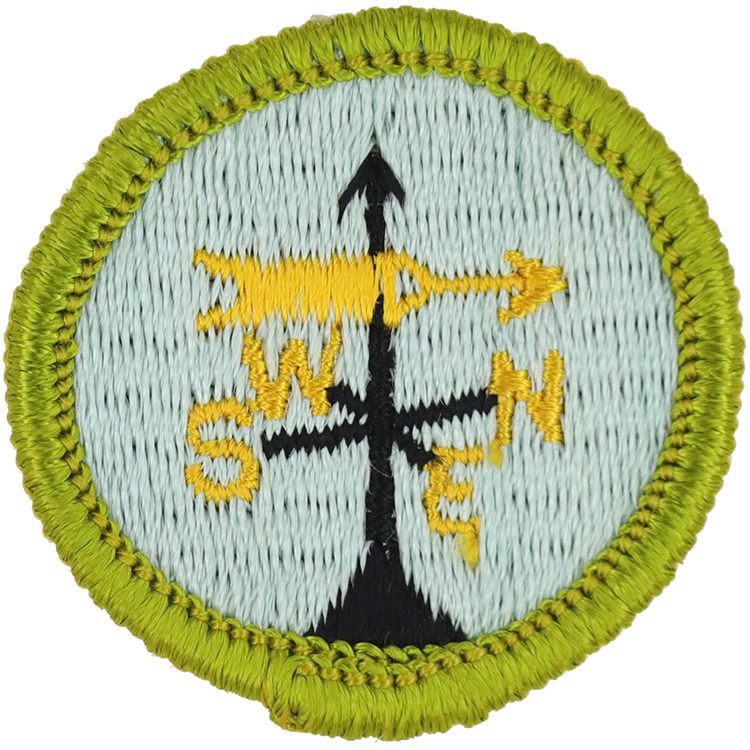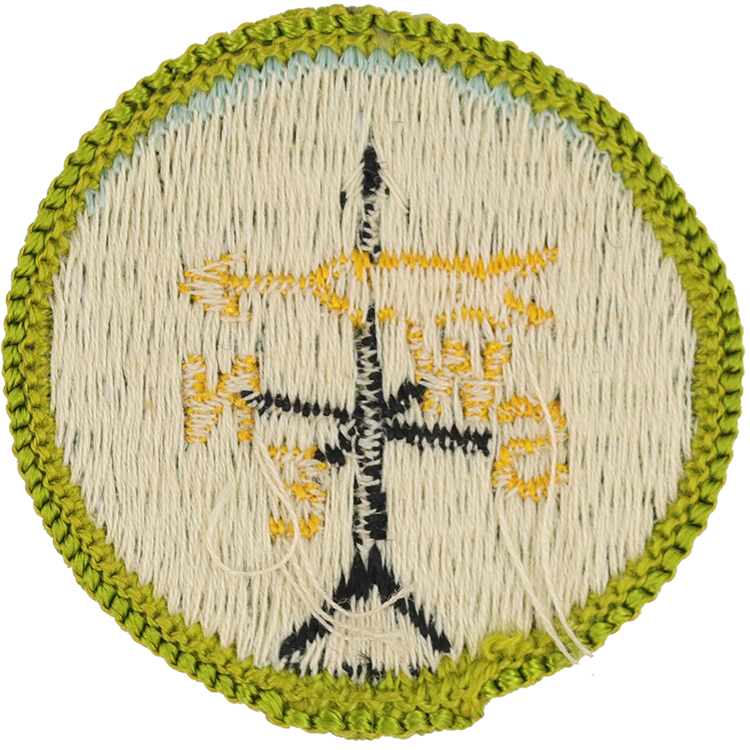
Fig. 1: Weathe-G-Front
- Embroidery: Cotton thread
- Border: Merrowed

Fig. 2: Weathe-G-Reverse
- Back: Starched cloth
Item Name: Weather 1969 - 1972
Item ID: Weathe-G
Collector Rating: 1
Requirements December 1962 until June 1972
1. Obtain information about the climate (maximum and minimum temperatures, humidity, rainfall, wind) in your locality and discuss its influence on industry, agriculture, clothing, transportation, housing, and recreation.
2. Do the following:
(a) Tell what meteorology is. Visit a weather bureau station. Explain the methods and devices that are used in taking observations. Describe the following instruments and tell how they are used in weather measurement: wind vane, anemometer, barometer, thermometer, hygrometer, rain gauge.
(b) Tell how radar, satellites, and electronic devices are used in meteorology.
(c) Make a list of the radio and television stations in your area showing the times they broadcast weather forecasts. Tell when and how severe weather warnings are given.
(d) Read a weather map. Describe high-pressure system, low-pressure system, cold front, warm front, jet stream, isobar, and isotherm.
3. Do the following:
(a) Draw a cross section of the atmosphere showing its three main layers.
(b) Describe and distinguish between hurricanes, tornadoes, cyclones, squall lines, and blizzards. Know the safety precautions for thunderstorms and other severe weather. Know what types of storms affect your area.
(c) Estimate wind direction and velocity by its effect upon trees, flags, or like objects.
4. Do the following:
(a) Make a drawing showing the hydrologic cycle.
(b) Identify clouds according to form and height. Tell the differences between fair-weather cumulus and cumulonimbus; stratus, altostratus, and cirrostratus; stratocumulus and altocumulus.
(c) Distinguish between drizzle, rain, freezing rain, sleet, hail, and snow.
5. Do the following:
(a) Make a simple wind vane, rain gauge, anemometer, hair hygrometer, and nephoscope.
(b) Make a chart of the daily record for a month of the following: dew or frost in the morning; and at the same hour each day, wind direction, temperature, types of clouds, and precipitation.
(c) On the same chart for a month, list the United States Weather Bureau forecast obtained from radio or television at the same time each day; also, on the same chart, give a brief description of how the weather actually turned out. Count the number of times the last two entries are in agreement.

